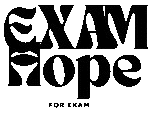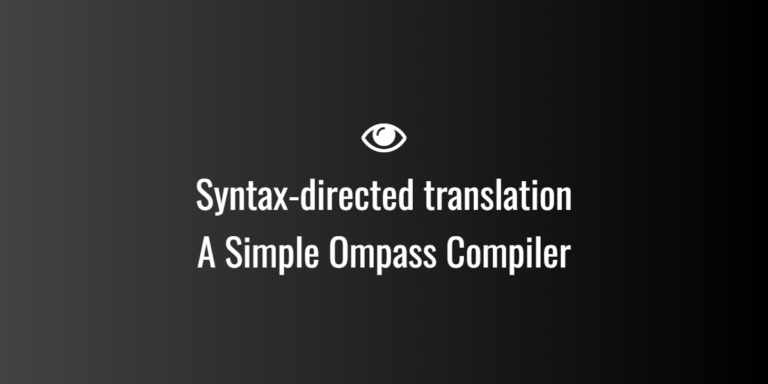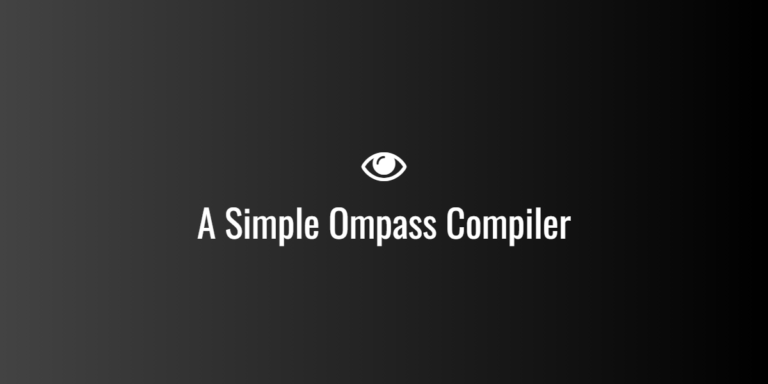- Which of the following methods is used for error detection by ensuring the total number of 1s is even or odd?
- A) Parity Bit
- B) CRC
- C) Hamming Code
- D) Reed-Solomon
- Answer: A) Parity Bit
- What type of error can a parity bit detect?
- A) Single-bit errors
- B) Double-bit errors
- C) Burst errors
- D) All of the above
- Answer: A) Single-bit errors
- In a system using even parity, what would the parity bit be for the data
1011010?- A) 1
- B) 0
- C) 2
- D) 3
- Answer: A) 1
- Which of the following is used for checking errors in larger blocks of data?
- A) Parity Bit
- B) Checksums
- C) Hamming Code
- D) Bit Error Rate
- Answer: B) Checksums
- What is the purpose of the Cyclic Redundancy Check (CRC)?
- A) To correct errors in real-time communication
- B) To detect burst errors
- C) To increase the transmission speed
- D) To encode data
- Answer: B) To detect burst errors
- Which of the following methods can detect burst errors?
- A) Parity Bit
- B) Checksums
- C) Hamming Code
- D) CRC
- Answer: D) CRC
- Which technique is used to add extra bits (called parity bits) at specific positions to detect and correct errors?
- A) Hamming Code
- B) Reed-Solomon
- C) ARQ
- D) Turbo Codes
- Answer: A) Hamming Code
- How does the Hamming code detect errors?
- A) By calculating a checksum
- B) By adding extra bits at powers of 2 positions
- C) By dividing data by a polynomial
- D) By using a parity bit
- Answer: B) By adding extra bits at powers of 2 positions
- Which of the following is a method used for correcting errors without retransmission?
- A) Automatic Repeat Request (ARQ)
- B) Forward Error Correction (FEC)
- C) Parity Bit
- D) Checksums
- Answer: B) Forward Error Correction (FEC)
- Which of the following ARQ methods involves the receiver sending a negative acknowledgment (NAK) for corrupted data?
- A) Stop-and-Wait ARQ
- B) Go-Back-N ARQ
- C) Selective Repeat ARQ
- D) None of the above
- Answer: A) Stop-and-Wait ARQ
- Which ARQ method sends multiple packets before waiting for acknowledgment?
- A) Go-Back-N ARQ
- B) Stop-and-Wait ARQ
- C) Selective Repeat ARQ
- D) Parity Check
- Answer: A) Go-Back-N ARQ
- Which of the following is NOT a type of ARQ?
- A) Stop-and-Wait ARQ
- B) Go-Back-N ARQ
- C) Selective Repeat ARQ
- D) Hamming Code
- Answer: D) Hamming Code
- Which of the following is used to detect and correct multiple errors, especially burst errors?
- A) Reed-Solomon
- B) Parity Check
- C) Hamming Code
- D) Turbo Codes
- Answer: A) Reed-Solomon
- What type of errors can Reed-Solomon codes correct?
- A) Single-bit errors
- B) Multiple-bit errors
- C) Burst errors
- D) All of the above
- Answer: D) All of the above
- In which application is Reed-Solomon commonly used?
- A) CD and DVD error correction
- B) Wireless communication
- C) Data storage in hard drives
- D) None of the above
- Answer: A) CD and DVD error correction
- Which of the following codes is known for its ability to achieve near-optimal error correction performance?
- A) Hamming Code
- B) Turbo Codes
- C) Reed-Solomon
- D) ARQ
- Answer: B) Turbo Codes
- Which error detection method works by performing a polynomial division on the data?
- A) Checksums
- B) CRC
- C) Parity Bit
- D) Reed-Solomon
- Answer: B) CRC
- What is the main advantage of using Forward Error Correction (FEC)?
- A) It reduces the overall transmission rate
- B) It eliminates the need for retransmission
- C) It increases the error rate
- D) It is only used in packet-switched networks
- Answer: B) It eliminates the need for retransmission
- What type of code is used in Turbo Codes?
- A) Convolutional Codes
- B) Reed-Solomon Codes
- C) Hamming Codes
- D) Block Codes
- Answer: A) Convolutional Codes
- In Selective Repeat ARQ, how are errors handled?
- A) Only the erroneous packets are retransmitted
- B) All subsequent packets are retransmitted
- C) The sender waits for an acknowledgment of the last received packet
- D) There is no error correction in Selective Repeat ARQ
- Answer: A) Only the erroneous packets are retransmitted
- What is the main advantage of using Automatic Repeat Request (ARQ)?
- A) It guarantees no errors will occur in transmission
- B) It allows for retransmission of lost or corrupted packets
- C) It works without any need for additional error correction
- D) It requires no acknowledgment from the receiver
- Answer: B) It allows for retransmission of lost or corrupted packets
- Which of the following is an error correction method that adds redundancy to the data before transmission?
- A) Parity Bit
- B) Forward Error Correction (FEC)
- C) ARQ
- D) Checksums
- Answer: B) Forward Error Correction (FEC)
- What is the primary function of a checksum?
- A) To correct errors in real-time communication
- B) To detect errors in received data
- C) To compress data
- D) To encode data
- Answer: B) To detect errors in received data
- Which error detection technique can detect multiple bit errors in data transmission?
- A) Parity Bit
- B) Checksums
- C) Hamming Code
- D) CRC
- Answer: D) CRC
- Which of the following is the main function of the Hamming Code?
- A) Detecting multiple-bit errors
- B) Correcting single-bit errors
- C) Detecting burst errors
- D) Compressing data for transmission
- Answer: B) Correcting single-bit errors
- Which of the following methods can detect errors but cannot correct them?
- A) Parity Check
- B) Forward Error Correction
- C) Reed-Solomon Codes
- D) Turbo Codes
- Answer: A) Parity Check
- Which error correction method is used in QR codes?
- A) Reed-Solomon Codes
- B) Turbo Codes
- C) Hamming Codes
- D) Convolutional Codes
- Answer: A) Reed-Solomon Codes
- In which of the following scenarios would Forward Error Correction (FEC) be most useful?
- A) Real-time video streaming
- B) File transfer over a reliable network
- C) Disk storage
- D) Sending large files over email
- Answer: A) Real-time video streaming
- Which of the following methods is used to detect errors caused by noise in a communication channel?
- A) Checksums
- B) Parity Bit
- C) Hamming Code
- D) All of the above
- Answer: D) All of the above
- What does the term “burst errors” refer to in the context of error detection?
- A) Errors that affect only a few bits
- B) Errors that affect consecutive bits
- C) Errors caused by incorrect coding
- D) Errors that occur when the transmission rate is too fast
- Answer: B) Errors that affect consecutive bits
- Which of the following is NOT an error correction code?
- A) Hamming Code
- B) Reed-Solomon Code
- C) CRC
- D) Turbo Codes
- Answer: C) CRC
- How are error-correcting codes like Reed-Solomon and Hamming Code different from error-detecting codes like checksums and parity?
- A) Error-correcting codes can recover lost data, while error-detecting codes can only detect errors.
- B) Error-detecting codes can recover lost data, while error-correcting codes can only detect errors.
- C) Both types of codes can recover lost data.
- D) None of the above
- Answer: A) Error-correcting codes can recover lost data, while error-detecting codes can only detect errors.
- Which of the following error detection methods is most commonly used in network protocols like Ethernet?
- A) Parity Bit
- B) CRC
- C) Hamming Code
- D) Checksums
- Answer: B) CRC
- Which of the following is an example of an error detection technique that adds redundant bits to the transmitted data?
- A) Turbo Codes
- B) Reed-Solomon Codes
- C) Parity Bit
- D) All of the above
- Answer: D) All of the above
- What is the result when the receiver calculates a checksum and the result is not zero?
- A) The data is correct
- B) An error is detected
- C) The receiver will request retransmission
- D) Both B and C
- Answer: D) Both B and C
- In which of the following does the receiver have the ability to correct errors without retransmission?
- A) ARQ
- B) FEC
- C) Hamming Code
- D) Parity Bit
- Answer: B) FEC
- What is the primary advantage of using error correction over error detection?
- A) Error correction reduces the need for retransmission.
- B) Error correction is faster than error detection.
- C) Error correction is more expensive than error detection.
- D) Error correction works better in real-time applications.
- Answer: A) Error correction reduces the need for retransmission.
- Which of the following ARQ methods is best suited for low-latency applications?
- A) Stop-and-Wait ARQ
- B) Go-Back-N ARQ
- C) Selective Repeat ARQ
- D) None of the above
- Answer: C) Selective Repeat ARQ
- Which error detection method adds redundant bits in a cyclic manner to the data?
- A) Hamming Code
- B) CRC
- C) Reed-Solomon
- D) Parity Bit
- Answer: B) CRC
- What type of data transmission can benefit most from Forward Error Correction?
- A) File transfer over the Internet
- B) Real-time voice or video calls
- C) Large file backup
- D) All of the above
- Answer: B) Real-time voice or video calls
- Which of the following error detection techniques is the simplest?
- A) Checksums
- B) Parity Bit
- C) CRC
- D) Hamming Code
- Answer: B) Parity Bit
- Which error correction method is most commonly used in satellite communication?
- A) Turbo Codes
- B) ARQ
- C) Reed-Solomon Codes
- D) Hamming Code
- Answer: C) Reed-Solomon Codes
- Which method is used to detect errors in TCP/IP networks?
- A) Parity Bit
- B) Checksums
- C) CRC
- D) Forward Error Correction
- Answer: B) Checksums
- In which type of transmission is error detection and correction more critical?
- A) Asynchronous transmission
- B) Synchronous transmission
- C) Real-time transmission
- D) Long-distance transmission
- Answer: C) Real-time transmission
- Which of the following statements is true about Forward Error Correction (FEC)?
- A) FEC always requires retransmission.
- B) FEC can work in situations with low bandwidth.
- C) FEC reduces the need for acknowledgments.
- D) FEC only works with stop-and-wait protocols.
- Answer: C) FEC reduces the need for acknowledgments.
- What is the primary role of the Hamming distance in error correction?
- A) It defines the maximum number of errors that can be corrected.
- B) It calculates the number of bits that differ between two data sequences.
- C) It checks the integrity of data during transmission.
- D) It is used to generate the redundancy bits.
- Answer: B) It calculates the number of bits that differ between two data sequences.
- What is the maximum number of errors that can be corrected using Hamming code?
- A) One bit error
- B) Two bit errors
- C) Three bit errors
- D) Multiple errors
- Answer: A) One bit error
- In error correction codes, what does the term “redundancy” refer to?
- A) Extra bits added to the transmitted data for error detection and correction
- B) The number of bits in the original data
- C) The error detection capacity
- D) The size of the data packet
- Answer: A) Extra bits added to the transmitted data for error detection and correction
- Which of the following is an example of a method used to correct burst errors?
- A) Reed-Solomon Code
- B) Hamming Code
- C) Parity Check
- D) None of the above
- Answer: A) Reed-Solomon Code
- Which of the following error detection techniques is primarily used in network communication protocols such as Ethernet?
- A) Parity Bit
- B) CRC
- C) Hamming Code
- D) Forward Error Correction
- Answer: B) CRC




